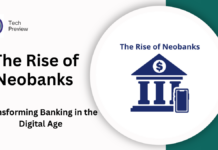In the decentralized world of Bitcoin, maintaining order is crucial. This article explores the fundamental topic of Bitcoin’s consensus rules and their significance in upholding the integrity of the network. The decentralized world of Bitcoin operates by consensus rules, a discipline mirrored in the efficient functionality of bitcoin code, known for its automated trading features.
Impact of Consensus Rules on Bitcoin’s Functionality
One of the key considerations in Bitcoin’s consensus rules is scalability. The block size limit, a consensus rule that determines the maximum size of a block on the blockchain, directly influences the number of transactions that can be processed within a given time frame. While a larger block size could potentially allow for more transactions to be included, it also presents challenges such as increased storage requirements and longer validation times.
In addition to scalability, consensus rules also affect transaction speed and fees. Bitcoin’s consensus mechanism, Proof of Work, requires miners to solve complex mathematical puzzles to validate transactions and add them to the blockchain. The difficulty adjustment consensus rule ensures that the average time required to solve these puzzles remains relatively constant, maintaining a consistent block time. However, this also means that transaction speed is limited by the time it takes to validate blocks.
Furthermore, consensus rules influence the fees associated with Bitcoin transactions. Miners prioritize transactions with higher fees, incentivizing users to pay more to have their transactions processed quickly. This fee market is a direct result of the consensus rules governing transaction selection. While this mechanism ensures that miners are adequately rewarded for their efforts, it also raises concerns about the affordability and inclusivity of Bitcoin transactions, particularly for smaller transactions or users in regions with limited financial resources.
Understanding the impact of consensus rules on Bitcoin’s functionality is crucial for the ongoing development and adoption of the cryptocurrency. Striking a balance between scalability, transaction speed, and fees is a continuous challenge faced by the Bitcoin community. Various proposals and debates regarding consensus rule changes highlight the dynamic nature of Bitcoin’s ecosystem and the importance of carefully considering the potential consequences before implementing any modifications.
Ensuring Consensus: Nodes, Miners, and Governance
Ensuring consensus within the Bitcoin network requires the active participation of nodes, miners, and a well-defined governance structure. Nodes are essential components of the network as they validate and relay transactions to other nodes, contributing to the overall consensus mechanism. By verifying the integrity of transactions and blocks, nodes play a crucial role in maintaining the trustworthiness of the Bitcoin network.
Miners, on the other hand, are responsible for securing the network and adding new blocks to the blockchain through the process of mining. Through their computational power, miners compete to solve complex mathematical puzzles and earn the right to validate transactions. This proof-of-work consensus mechanism incentivizes miners to invest in powerful hardware and electricity, making the network more secure.
Moreover, governance plays a vital role in ensuring consensus and maintaining the stability of the Bitcoin network. Bitcoin’s governance structure is characterized by a decentralized and community-driven approach, where decisions are made through a consensus-building process. While there is no central authority in control, various stakeholders, including developers, miners, node operators, and users, contribute to the decision-making process.
However, achieving consensus within the Bitcoin community can be challenging. Disagreements and diverging opinions on proposed changes to consensus rules or other network upgrades often arise. These debates revolve around topics such as block size, transaction fees, privacy enhancements, or the implementation of new features. The process of consensus-building requires open dialogue, compromise, and the consideration of diverse perspectives.
Consensus rule changes, which are rare but necessary at times, can lead to network forks. When a significant portion of the community disagrees with proposed changes, a fork can occur, resulting in the creation of two separate chains. These forks can be either soft forks, where the new rules are backward-compatible, or hard forks, where the new rules are not compatible with the existing chain. Forks can introduce uncertainty and potential disruptions in the network, highlighting the importance of careful governance and community engagement.
Ultimately, the Bitcoin network’s ability to ensure consensus relies on the active participation and collaboration of nodes, miners, and the governance structure. The collective efforts of these stakeholders contribute to the integrity, security, and trustworthiness of the network. By upholding the principles of decentralization, transparency, and inclusivity, the Bitcoin community can navigate the complexities of consensus, adapt to evolving challenges, and continue to drive innovation in the decentralized world of cryptocurrencies.
Conclusion
Bitcoin’s consensus rules serve as the backbone of its decentralized architecture, ensuring the trust and security of transactions. As the cryptocurrency ecosystem evolves, understanding and adapting these rules will be essential. By embracing consensus, Bitcoin continues to pave the way for a decentralized future.









